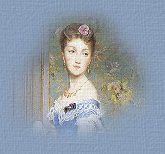|


The
“coming out” of a young woman represented a change
in her status from child to adult and her
“introduction” to society. This became formalized in
English aristocratic society in the first half of the
nineteenth century through the Victorian period. Up to
the point of their coming of age of seventeen or
eighteen, girls did not have much of a role, other than
to attend to their schooling, as social functions and
contacts were fairly limited. A young lady’s
introduction to society not only marked her transition
to adulthood, but also her availability for marriage.
Marriages were no longer being arranged by this time, so
the formalization of the event helped insure that she
would meet young men who were deemed suitable by her
parents.
For
those in “society” with contacts to the royal
family, the actual coming out was the introduction of
the debutante to the king or queen. This usually
occurred in June when the debutante would go to the
royal palace at an appointed time. This was a big event
with the debutante dressed in a long gown with a
trailing court train wearing a tiara headdress. Indeed,
she would practice getting in and out of a coach before
the appointed day so that she could move gracefully when
she arrived at the palace. The event itself was quite
short, but was formal and conducted with a certain
amount of “pomp and ceremony”. Once introduced, the
debutante emerged as an adult and it marked the
beginning of her first social season, although if she
did not get married or engaged, the coming out was often
repeated.
|